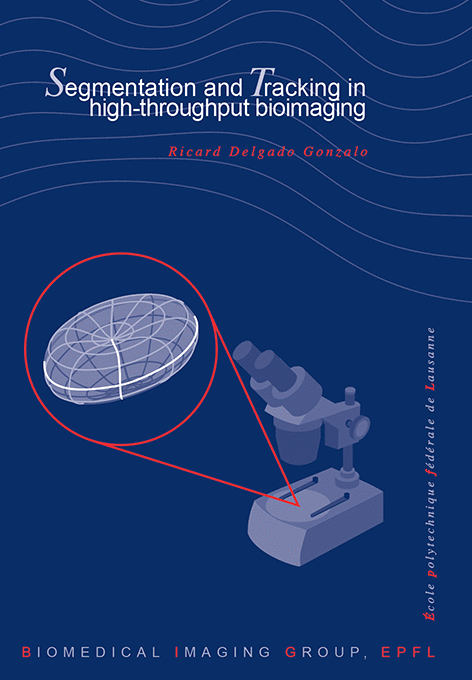Segmentation and Tracking in High-Throughput Bioimaging
R.D. Gonzalo
SSBE research award, École polytechnique fédérale de Lausanne, EPFL Thesis no. 5657 (2013), 186 p., March 15, 2013.
2013 Research Award of the Swiss Society for Biomedical Engineering
This thesis addresses the problem of detecting and segmenting biological objects and tracking them over time. This is far from trivial due to the fact that, in biology, the objects of interest are usually indistinguishable from each other and can appear tightly packed and in various configurations. Since we focus on objects that have a constrained shape and move according to specific patterns, it seems natural to approach the detection, segmentation, and tracking problems with model-based techniques.
We present a class of parametric active contours that use a novel kind of B-splines as basis functions. We prove analytically that our new bases have the shortest-possible support, subject to some design constraints. While the resulting active contours are versatile and able to closely approximate any closed curve in the plane, their most important feature is the fact that they admit ellipses within their span. Thus, they are able to represent exact circular and elliptical shapes and are particularly appropriate to delineate cross sections of cylindrical-like conduits and to outline blob-like objects. Then, we extend our model to a fully parametric 3D design. The resulting active surface can approximate smooth blob-like objects with good accuracy and can perfectly reproduce spheres and ellipsoids of any position and orientation.
Finally, we make use of our active contours to segment and track mitotic cells in large-scale time-lapse images. Due to their optimally short support, our active contours are computationally efficient. Moreover, we designed a highly parallelizable image analysis toolkit to further increase the throughput rate.

@PHDTHESIS(http://bigwww.epfl.ch/publications/gonzalo1301.html,
AUTHOR="Gonzalo, R.D.",
TITLE="Segmentation and Tracking in High-Throughput Bioimaging",
SCHOOL="{\'{E}}cole polytechnique f{\'{e}}d{\'{e}}rale de {L}ausanne
({EPFL})",
YEAR="2013",
type="{EPFL} Thesis no.\ 5657 (2013), 186 p.",
address="",
month="March 15,",
note="{SSBE} research award")